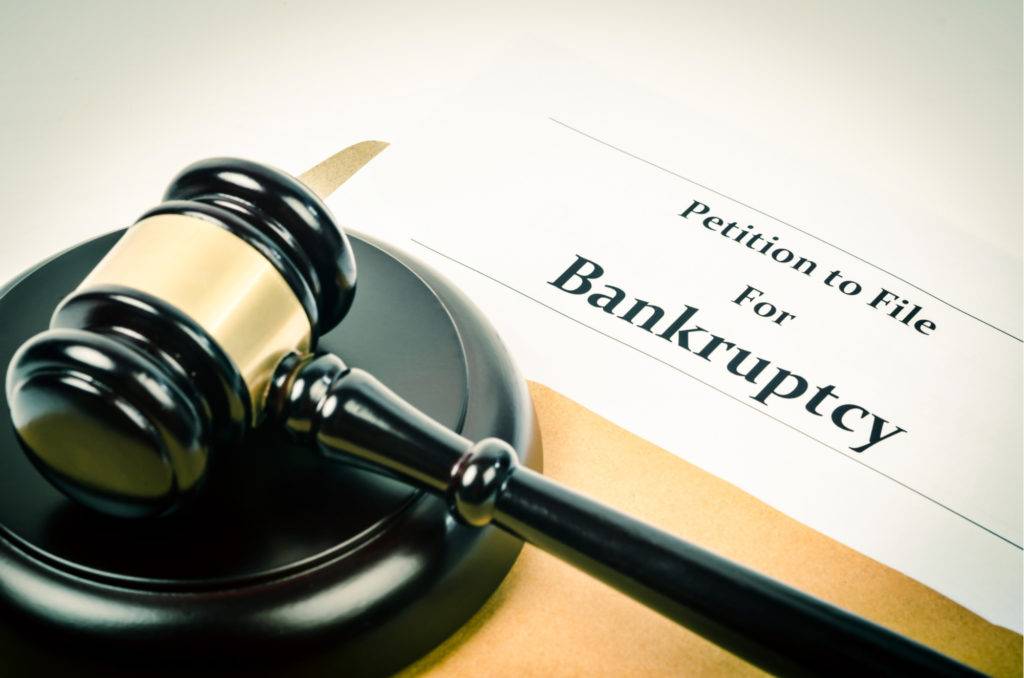Foreclosure is the legal process by the lien holder, usually the Mortgage company, in which they obtain a court order terminating the delinquent borrower’s equitable right of redemption. Usually the lender obtains a security interest from a borrower who mortgages or pledges an asset like a house to secure the loan. If the borrower defaults and the lender tries to repossess the property, courts of equity can grant the borrower the equitable right of redemption if the borrower repays the debt. While this equitable right exists, the lender cannot be sure that it can successfully repossess the property, thus the lender seeks to foreclose the equitable right of redemption.
Types of Foreclosures:
Judicial Foreclosure
The judicial foreclosure process is one in which the lender must file a complaint against the borrower and obtain a decree of sale from a court having jurisdiction in the county where the property is located before foreclosure proceedings can begin. Generally, if the court finds the borrower in default, they will give them a set period of time to pay the delinquent amount, plus costs. If the borrower does not pay within the set period of time, the court will then order the property to be sold by the sheriff of the county or a referee.
Non-Judicial Foreclosure
The non-judicial process of foreclosure is used when a power of sale clause exists in a mortgage or deed of trust. A “power of sale” clause is the clause in a deed of trust or mortgage, in which the borrower pre-authorizes the sale of property to pay off the balance on a loan in the event of the default. In deeds of trust or mortgages where a power of sale exists, the power given to the lender to sell the property may be executed by the lender or their representative, typically referred to as the trustee. Although this type of foreclosure is permitted in New York, it is rarely used by lenders.
Reinstatement:
The Reinstatement amount is the total amount past due including late fees and attorney fees. This amount bring the mortgage up-to-date immediately. Given the financial circumstances in the past, the debtor may face a sizable amount of past-due fees, including back payments, late fees and legal expenses. If the debtor is able to promise a lump-sum to bring the payments to a current status by a specific date, they may be eligible for a Reinstatement.
Consider what funds are disposable. Many clients have retirement funds, credit cards or insurance policies that can provide the much-needed funds to stay secure in their home. Other clients will seek private loans from family or friends or co-workers.
A Reinstatement will offer the debtor the quickest method for resolving a mortgage foreclosure. With the foreclosure resolved the delinquent borrower can once again enjoy the security of their home.
Loan Forbearance:
Some of our clients are eligible for Forbearance, which will give the distressed borrower time to gather assets. In Forbearance, the debtor is allowed to delay or reduce payments for a short period, with the understanding that another option will be used at the close of that time to bring the account to a current status. The lender, if in agreement, will then temporarily cease legal actions.
Lenders may agree to combine the Forbearance with Reinstatement or a Repayment Plan if the debtor can provide the needed funds to bring their account current by a specific date. This plan works for people who have just experienced a sudden living expense increase or income loss. We will negotiate with the lender to explain this hardship and hopefully get the time needed to readjust spending and recover financially.
Repayment Plan:
The most common way of resolving a loan default is to work out a plan (Repayment Plan) which will let the overburdened borrower repay part of the delinquency each month, along with a regular monthly installment.
Most of our clients will be eligible for a Repayment Plan for the amount they are delinquent if their financial circumstances have stabilized. Some of our clients have realized a short term financial hardship that has caused them to become delinquent. They are now financially back on their feet and need help getting caught up. In this instance we will negotiate with the lender to distribute the past-due amount over a set period of time, usually 18-24 months, depending on the circumstances. The lender will usually ask for 25-50% of the arrearage down and the remainder will be paid out over a period of months. The delinquent borrower will need to provide financial information to prove that they are now capable of making this responsibility. Remember, this monthly amount is in addition to your usual mortgage payment.
This type of solution to a mortgage foreclosure is generally accepted very well by lenders. We will complete a detailed financial portfolio of the debtor’s income vs. expenses to show the lender what payment will work with his/her current income along with what down payment that debtor can afford. This will bring the account up to date immediately and keep the them secure in their home.
Loan Modifications:
Often recommended to distressed homeowners is the Loan Modification Plan to stop foreclosure. If the debtor can currently make regular payments, but can’t catch up with the past-due amount, we will negotiate with the lender to fold any past-due amounts, including interest and escrow, into the unpaid principal balance. This new amount will be re-amortized over a new period of time.
Or, if the delinquent borrower is unable to make payments at this rate, we will negotiate with the lender to extend the loan for a longer period of time or lower the rate, modifying the loan amount to a more affordable level.
A Loan Modification will change the existing mortgage note and give the overburdened borrower a fresh new start in managing their home. The account will be brought up to date immediately.
Types of Loan Modifications:
Making Home Affordable: There are five basic requirements that must be met in order to qualify for loan modification under the MHA program. First, the home in question has to be the borrower’s primary residence (a term that has a strict definition) and cannot be a rental property or vacation home. Second, the amount owed on the primary mortgage (excluding second mortgages and other liabilities) has to be $729,750 or less. Third, the primary mortgage (the loan to be modified) has to have been obtained prior to January 1, 2009, since borrowers that received loans after that date should have known precisely what they were getting themselves into. Fourth, the borrower has to be able to show substantial financial hardship, usually involving either a major increase in the monthly mortgage payments, a major decrease of their monthly income, or some sort of major financial disaster. Fifthly and finally, the borrower has to be paying more than thirty-one percent of their monthly gross income on their mortgage payments.
In-House Loan Modification: This is a traditional, non-Federal loan modification option, which doesn’t need to adhere to the strict governmental requirements necessary for other loan modifications. There is also no third party, it’s just the delinquent borrower’s attorney dealing directly with the lender.
Partial Claim:
If the debtor has a FHA Loan, we will be able to start discussions with the lender for a Partial Claim. This strategy is only available on FHA loans. Working together with The Department of Housing and Urban Development (HUD), the lender will agree to help with a one-time payment from the FHA Insurance Fund.
This may be an option if the loan is:
1. At least 4 months but no more than 12 months delinquent
2. The debtor is able to begin making full mortgage payments
3. The debtor has resolved the hardship that caused delinquency
4. The debtor may or may not be in Foreclosure
5. The mortgagor has the long-term financial stability to support the mortgage debt or make the payment
6. The home owner does not have the ability to repay the past due amount through a special forbearance or modification
7. The property is the debtor’s primary residence
8. If the debtor ahs filed for Bankruptcy its still possible to get a partial claim, the Bankruptcy Court must give approval.
The delinquent borrower will be required to sign a promissory note with HUD and they will place a lien on the property. This HUD loan is interest-free and will bring the account up to date immediately, but it is due when the loan is paid off or when the property is sold or vacated.
What Happens if I Can’t Modify?
If loan modification is not an option given a delinquent borrower’s particular financial situation there are other Loss Mitigation options available. Loss Mitigation is the Legal process by which the financially distressed avoid or curtail their financial losses.
So, what are other Loss Mitigation options?
Pre-Foreclosure Sale:
If the overburdened borrower is willing to sell their home or currently have the house on the market, some lenders might agree to put the foreclosure on hold while waiting for the sale of the home through traditional real estate methods. The debtor may be able to qualify if the mortgage is at least 2 months delinquent, are able to sell the home within 3-5 months and the new appraisal shows that the value of the home meets HUD program guidelines. Allowing them to pay off the mortgage loan to avoid foreclosure and prevent any damage to their credit rating.
Short Sale:
For some clients, selling their home is actually the relief that they need. After reviewing the delinquent borrower’s financial portfolio, it may become obvious that they can no longer afford the home. Many owners have often realized this and tried unsuccessfully for months to sell their home through traditional real estate methods.
But, because of market fluctuations and changes beyond control, sometimes a home may not sell at the anticipated full price of the loan. A Short Sale allows you to sell the home to a third party at a price which is less than the total amount that is owed.
Deed-in-lieu of Foreclosure:
The deed in lieu of foreclosure offers several advantages to both the borrower and the lender. The principle advantage to the borrower is that it immediately releases him from most or all of the personal indebtedness associated with the defaulted loan. The borrower also avoids the public notoriety of a foreclosure proceeding and may receive more generous terms than he/she would in a formal foreclosure.
If you have been unable to make the monthly mortgage payments and have also been unsuccessful trying to sell the home at the market value, the deed in lieu of foreclosure may be what is necessary to get back on track. This procedure allows the debtor to transfer property voluntarily to the lender or Mortgage Company and the debt or deficiency is often forgiven. This will not save the debtor’s home, but it will help you with the chances of getting another mortgage loan in the future and it will help avoid the lengthy legal process of foreclosure. Although it is a negative strike on your credit rating, it is less harmful than a mortgage foreclosure.













